1944
The Public Library Association is founded with the purpose to “advance public library interests and to cooperate in the promotion of library service in general.”
On Oct. 13, 1944 the American Library Association’s governing council approves the creation of a Division of Public Libraries. Original dues were established as 20 percent of the dues paid to ALA, not to exceed $2.00. Amy Winslow becomes the first president of PLA, with Julia Wright Merrill serving as the first executive secretary (now known as the executive director).
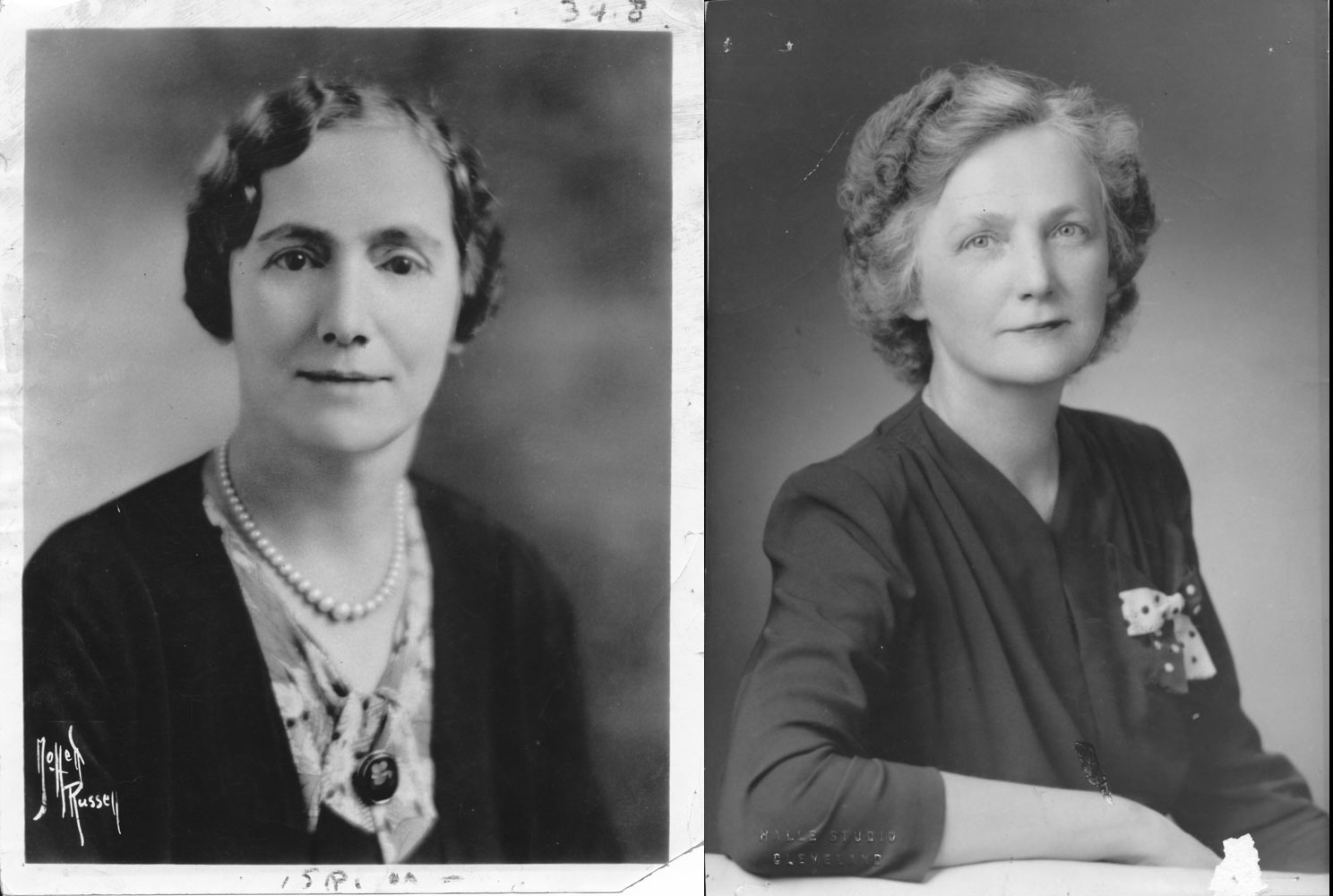
1945
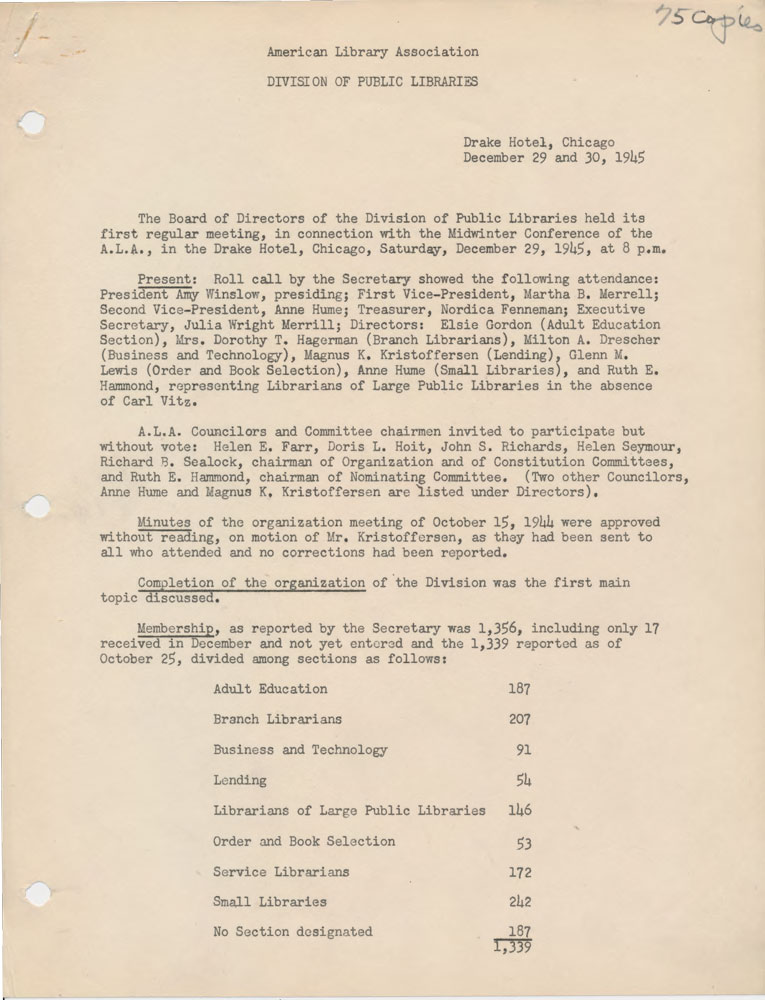
The first meeting of the PLA Board of Directors is held at the 1945 ALA Midwinter Meeting in Chicago, IL.
1947

The first issue of Public Libraries magazine is published. The magazine’s first editor is Muriel E. Perry, Decatur (IL) Public Library.
1980
The document Planning Process for Public Libraries is published. At a time when public libraries are moving from serving traditional users (educated, middle-income women and their children) to focusing on public needs – a novel idea at the time – this publication is a useful and unique tool for libraries.
1983
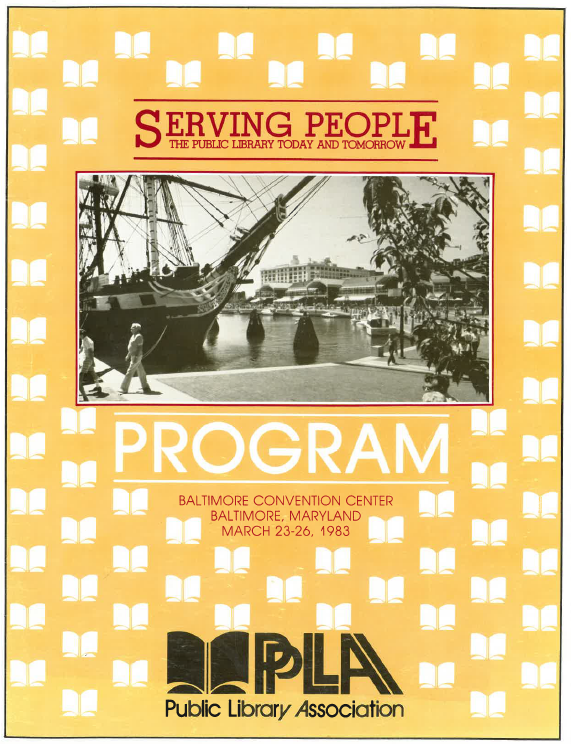
PLA’s first national conference is held in Baltimore, MD. The theme of the conference is Serving People: The Public Library Today and Tomorrow. The purpose of the conference is to arrive at a better understanding of the philosophical basis of the public library as an institution that is committed to serving the public. The conference welcomes librarians, trustees, educators, library school students, and friends of the public library. The conference is a tremendous success that continues to present day.
Image: First PLA Conference Program Cover
2004

PLA’s signature early childhood literacy tool, Every Child Ready to Read @ Your Library (ECRR), is released. ECRR is a turn-key, research-based early literacy outreach education program for parents and caregivers. PLA and the Association for Library Service to Children (ALSC) concluded that public libraries could have an even greater impact on early literacy through an approach focused on educating parents and caregivers. If the primary adults in a child’s life can learn more about the importance of early literacy and how to nurture pre-reading skills at home, the effect of library efforts can be multiplied.
2005
Smartest Card, PLA’s premier campaign to encourage the library card enrollment nationwide, takes place. Libraries are provided with toolkits to explain why the library card is the smartest card to own.
2007

Turning the Page, an advocacy training curriculum developed for library associations and networks around the world, is launched. The curriculum is created with input from PLA and other grantees of the Bill & Melinda Gates Foundation’s Global Libraries initiative.
2008
Planning for Results, a streamlined process to help public librarians envision, evaluate, and respond to community needs with distinctive programs and services, is developed in partnership with Sandra Nelson.
2010
PLA begins to test e-learning opportunities, offering its first webinar, “Transforming Our Image,” which provides a thought-provoking strategy to change the way public library workers and public libraries are perceived in their communities.
2011
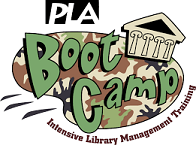
The first PLA Strategic Boot Camp takes place. It is an intensive four-and-a half-day training for library management, featuring a mixture of lecture-style instruction and small-group work. Time is also allotted for individual reflection about how the content fits within each library’s situation.
2013

PLA’s online hub for digital literacy support and training, DigitalLearn.org, launches, with support from the Institute of Museum and Library Services.
The website is intended to build upon and foster the work of libraries and community organizations as they work to increase digital literacy across the nation. DigitalLearn.org is created in partnership with ALA’s Office of Information Technology Policy and the Chief Officers of State Library Agencies, along with representatives from national agencies, state libraries, public libraries and community organizations.
The inaugural PLA Leadership Academy is held. The PLA Leadership Academy empowers public library professionals to become innovative and successful leaders of change, shifting their libraries from an internal approach—focused on organizational operations—to an external approach—focused on community needs.
PLA launches its performance measurement initiative and establishes the Performance Measurement Task Force, whose charge is to develop standardized measures of effectiveness for library services and promote training and implementation tools for using the data collected. The work of the task force leads to the creation of Project Outcome, a free online toolkit for measuring and analyzing outcomes data.
2016
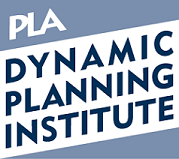
PLA holds its inaugural Dynamic Planning Institute, which delivers best practices in strategic planning for libraries with a unique focus on simple, low-cost planning. Participants learn how to create a dynamic strategic plan, in a timely manner, which will serve as a living document and create actionable pathways for decision making, community involvement and funding priorities.
The Bill & Melinda Gates Foundation makes a $10 million investment in PLA. Over the next 10 years, these funds will allow PLA to create and scale new models of public library research, training, and practice, strengthen collaboration across organizations that support public libraries, support global connections between public libraries and library organizations, and sustain the success of existing Global Libraries programs.
2017

PLA pilots the Inclusive Internship Initiative, supported by the Institute of Museum and Library Services, as a pathway program to increase diversity in public librarianship. Since its inception, more than 150 high school students from across the United States have learned about careers in librarianship.
